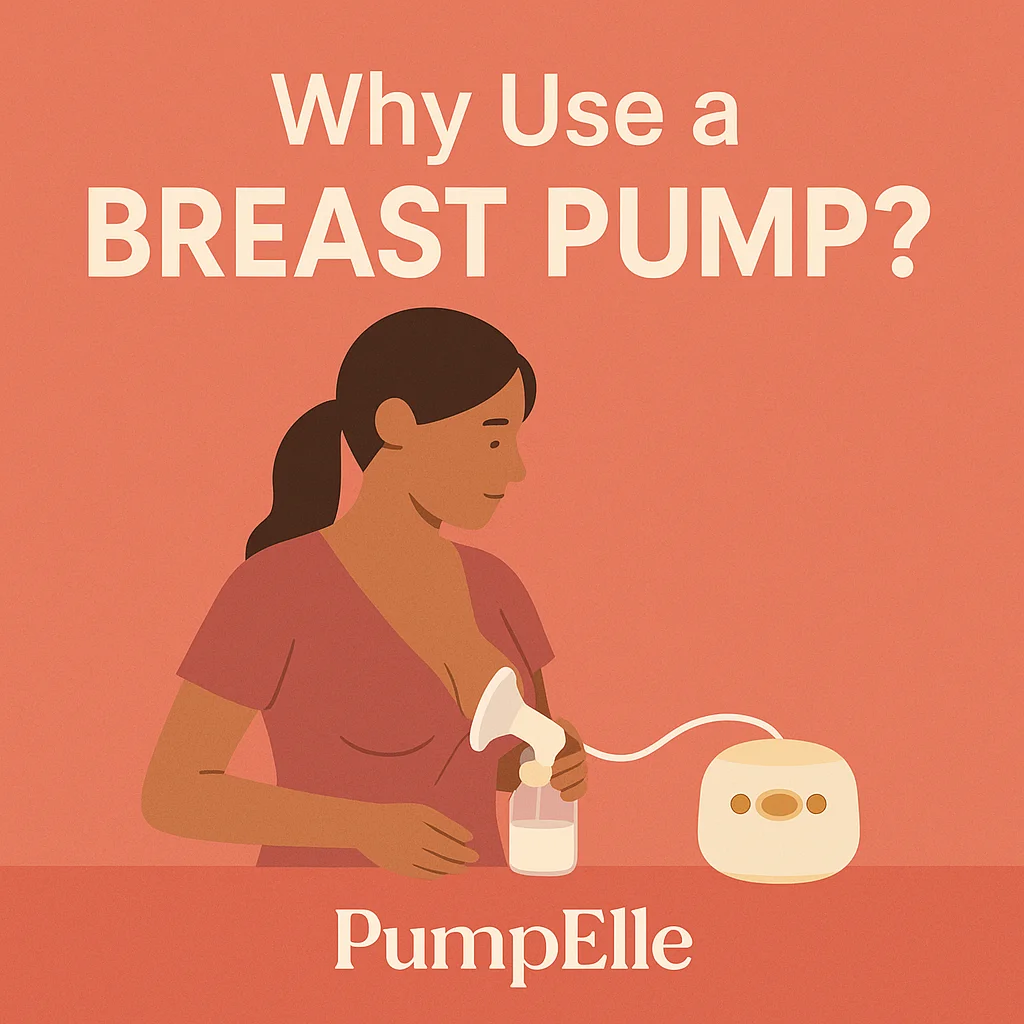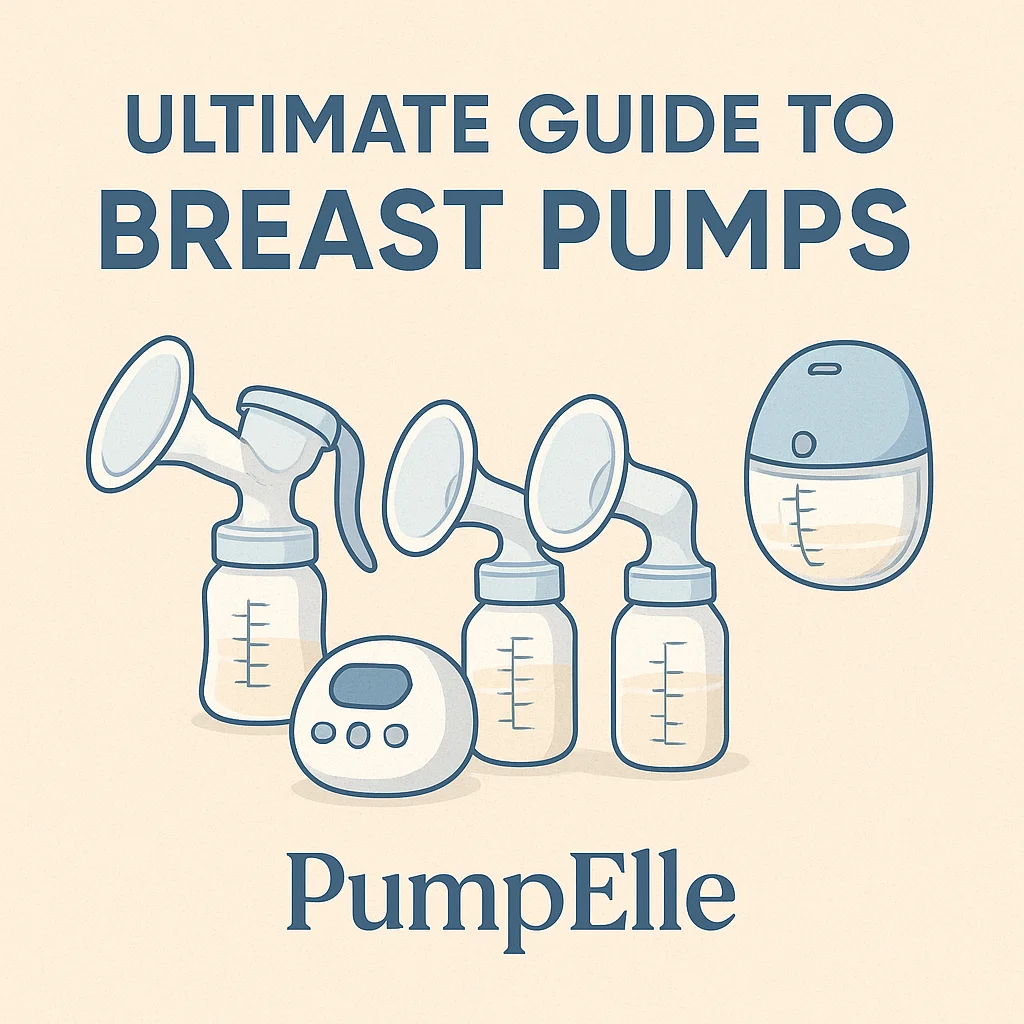Ultimate Guide to Breast Pumps | PumpElle
Breastfeeding is a beautiful journey, but it comes with its challenges. Whether you’re a new mom, returning to work, or exclusively pumping, a breast pump can be a game-changer. At PumpElle, we understand the importance of finding the right tools to support your breastfeeding goals. This ultimate guide to breast pumps covers everything you need to know—types, benefits, how to choose the best one, and expert tips to make pumping easier and more effective.
Ready to dive in? Let’s explore the world of breast pumps and help you find the perfect fit for your lifestyle.
Table of Contents
- What Is a Breast Pump?
- Why Use a Breast Pump?
- Types of Breast Pumps
- How to Choose the Right Breast Pump
- Pumping Tips for Success
- Cleaning and Maintaining Your Breast Pump
- Must-Have Breast Pump Accessories
- Pumping at Work
- Frequently Asked Questions
- Conclusion
What Is a Breast Pump?

A breast pump is a device that extracts milk from your breasts, allowing you to store it for later use. It mimics a baby’s natural sucking to stimulate milk production and let-down. Breast pumps come in various forms, from manual handheld devices to high-powered electric models, and they’re designed to fit different lifestyles and needs.
Whether you’re pumping to build a freezer stash, feed your baby while away, or maintain your milk supply, a breast pump offers flexibility and convenience. Curious about the different options? Check out our guide on Types of Breast Pumps for a detailed breakdown.
Why Use a Breast Pump?
Breast pumps are a lifeline for many moms, offering practical and emotional benefits. Here’s why you might consider using one:
- Flexibility: Pump and store milk so others (like your partner or caregiver) can feed your baby, giving you a break or time for work.
- Maintain Milk Supply: Regular pumping signals your body to keep producing milk, especially if you’re separated from your baby.
- Support Feeding Challenges: Pumps help moms with low supply, latch issues, or premature babies who can’t nurse directly.
- Convenience: Store milk for later or donate to milk banks to help other babies in need.
- Work-Life Balance: Pumping allows working moms to continue breastfeeding. Learn more in our Pumping at Work guide.
With the right pump, you can tailor breastfeeding to your unique schedule and needs, making it a powerful tool for modern moms.
Types of Breast Pumps
Breast pumps come in several types, each suited to different situations. Here’s a quick overview:
| Type | Description | Best For |
|---|---|---|
| Manual Breast Pumps | Hand-operated, no power source needed | Occasional pumping, travel, budget-conscious moms |
| Single Electric Pumps | Powered, pumps one breast at a time | Infrequent pumping, smaller budgets |
| Double Electric Pumps | Powered, pumps both breasts simultaneously | Frequent pumping, working moms, high milk output |
| Hospital-Grade Pumps | High-powered, durable, often rented | Premature babies, low supply, medical needs |
| Wearable Pumps | Compact, hands-free, fits in bra | Busy moms, on-the-go, discreet pumping |
Each type has unique features, like portability or suction strength. For example, the Spectra S1 Plus is a top double electric pump, while the Willow Go is a popular wearable option. Want to dive deeper? Our Types of Breast Pumps guide explores pros, cons, and recommendations.
How to Choose the Right Breast Pump?

With so many options, choosing a breast pump can feel overwhelming. Here are key factors to consider:
- Pumping Frequency: If you pump daily, a double electric or wearable pump (like the Elvie) saves time. Occasional pumpers may prefer a manual pump.
- Portability: Need to pump on the go? Look for battery-powered or wearable pumps. The Spectra S1 Plus has a rechargeable battery, ideal for travel.
- Noise Level: Quiet pumps like the Medela Pump in Style with MaxFlow are great for work or shared spaces.
- Budget: Manual pumps are affordable, while hospital-grade pumps are pricier. Check if your insurance covers a free pump.
- Comfort: Adjustable suction and proper flange size ensure a pain-free experience. See our Pumping Accessories guide for flange tips.
- Ease of Cleaning: Closed-system pumps (like Spectra) prevent milk from entering tubing, making cleanup easier.
Still unsure? Our Choosing the Right Breast Pump guide includes a quiz to match you with the perfect pump. You can also browse our curated selection at PumpElle’s Breast Pump Collection.
Pumping Tips for Success
Pumping is a skill, and these tips can help you maximize comfort and milk output:
- Establish a Routine: Pump every 2–3 hours to mimic your baby’s feeding schedule. This keeps your supply steady.
- Try Power Pumping: Mimic cluster feeding by pumping for 20 minutes, resting for 10, and repeating for an hour. It can boost supply.
- Use Hands-On Techniques: Massage your breasts before and during pumping to stimulate let-down.
- Stay Hydrated: Drink plenty of water and eat nutrient-rich foods to support lactation.
- Find the Right Flange Size: An ill-fitting flange can reduce output and cause discomfort.
For more strategies, check out our Pumping Tips and Techniques guide. It’s packed with hacks to make every session count.
Cleaning and Maintaining Your Breast Pump
Proper cleaning keeps your pump safe and efficient. Follow these steps:
- Rinse After Use: Disassemble parts that touch milk and rinse under running water.
- Wash Thoroughly: Use warm soapy water and a dedicated brush for small parts.
- Sanitize Daily: Boil parts for 5 minutes or use a steam sterilizer to kill bacteria.
- Air Dry: Let parts dry completely on a clean towel to prevent mold.
- Replace Parts: Check valves and membranes for wear and replace as needed.
Neglecting maintenance can reduce suction or contaminate milk. Our Cleaning and Maintenance Guide offers a step-by-step plan to keep your pump in top shape.
Must-Have Breast Pump Accessories
Accessories can make pumping more comfortable and convenient. Here are our top picks:
- Hands-Free Pumping Bra: Brands like Kindred Bravely let you multitask while pumping.
- Milk Storage Bags: BPA-free, leak-proof bags keep milk fresh.
- Lactation Massager: LaVie’s warming massager relieves clogged ducts.
- Portable Cooler: Keep milk cold on the go with ice packs.
- Spare Parts: Extra valves and membranes ensure uninterrupted pumping.
Want to upgrade your setup? Explore our Pumping Accessories guide and shop at PumpElle’s Accessories Collection.
Pumping at Work
Balancing work and breastfeeding is challenging, but a breast pump makes it possible. Here’s how to succeed:
- Know Your Rights: U.S. law requires employers to provide break time and a private space for pumping.
- Choose a Portable Pump: Wearable pumps like the Willow Go or quiet models like the Spectra S1 Plus are ideal.
- Store Milk Safely: Use a cooler with ice packs to keep milk fresh until you’re home.
- Communicate: Discuss your pumping needs with your employer early.
For a full plan, read our Pumping at Work guide. It includes a sample schedule and tips for busy moms.
Frequently Asked Questions
How Often Should I Pump?
Pump every 2–3 hours, or 8–12 times in 24 hours, to maintain supply. Adjust based on your baby’s feeding schedule.
Can I Share a Breast Pump?
Sharing pumps is risky due to contamination. If using a shared hospital-grade pump, ensure each user has their own sterile kit.
How Long Should I Pump Per Session?
Aim for 15–20 minutes per session, or until milk flow slows. Double pumping saves time.
Does Insurance Cover Breast Pumps?
Many U.S. insurance plans cover a free breast pump. Contact your provider or check with PumpElle for guidance.
How Do I Know If My Flange Size Is Correct?
Your nipple should move freely in the flange tunnel without pain or excessive areola pull. Consult our Accessories Guide for sizing tips.
Conclusion
A breast pump is more than a tool—it’s a partner in your breastfeeding journey. Whether you’re pumping at home, work, or on the go, the right pump and strategies can make all the difference. At PumpElle, we’re here to support you with expert advice and top-quality products.
Ready to find your perfect pump? Browse our Breast Pump Collection or dive into our blog for more resources:
- Types of Breast Pumps
- Choosing the Right Breast Pump
- Pumping Tips and Techniques
- Cleaning and Maintenance
- Pumping Accessories
- Pumping at Work
Your breastfeeding journey is unique, and PumpElle is here to empower you every step of the way.





